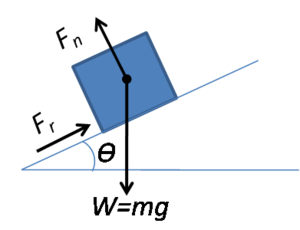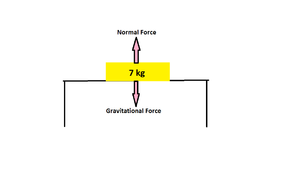Compression or Normal Force: Difference between revisions
| Line 64: | Line 64: | ||
==Connectedness== | ==Connectedness== | ||
This force is pretty important to understand because it explains the fundamental reason for why gravity doesn't keep pulling us down and explains this not-so-apparent force that is acting on an object. It helps explain why we don't keep falling into the Earth. The application of the normal force can be seen in many industrial situations. It must be taken into account when creating any free body diagram | This force is pretty important to understand because it explains the fundamental reason for why gravity doesn't keep pulling us down and explains this not-so-apparent force that is acting on an object. It helps explain why we don't keep falling into the Earth. The application of the normal force can be seen in many industrial situations. It must be taken into account when creating any free body diagram or any construction. | ||
==History== | ==History== | ||
Revision as of 14:49, 30 November 2015
Claimed by Hemanth Koralla

Compression of Normal Force
The compression or also commonly known as the normal force, [math]\displaystyle{ F_n\ }[/math], is a simple fundamental concept that must be understood before attempting any contact force problem. First, it is important to understand that the normal force is NOT a kind of fundamental force such as the electric or gravitational force. It is just a force used to describe the interaction between atoms. As hinted by the name, this force simply points in the perpendicular or "normal" direction to the surface(s) that it is in contact with. The magnitude of this normal force often just the weight of the object, depending on the angle at which object is resting on the other surfaces.
This normal force can also be used to find the force of static friction as well. The approximate force of friction is the static friction coefficient multiplied by this normal force.
Equations
The formula for calculating the normal force is:
- [math]\displaystyle{ F_n = mg \cos(\theta) }[/math]
and the formula for calculating the force of friction using this normal force is:
- [math]\displaystyle{ F_f (static) = \mu_k F_n }[/math]
- [math]\displaystyle{ = \mu_k (mg \cos(\theta)) }[/math]
Examples
Time for a few examples:
Simple

On the image to the left (Example 1), there is a 7 kilogram block resting on top a flat table. Find the normal force, [math]\displaystyle{ F_n\ }[/math], that is being exerted on the block. The force of gravity is 9.8 N/kg.
Answer
Fn = mgcos(theta) In this example, theta will be 90 since the normal force is perpendicular to the surface that it is resting on, thus 90 degrees. Now we can plug into our formula: m = 7kg g = 9.8 N/kg theta = 90
Fn = (7 kg)(9.8 N/kg)cos(90) = 68.6 N
Middling

In Example 2 (the figure to the right), the 14 kg block is lying stationary on a plane that is inclined 48 degrees. Find the normal force on the block on the incline. The force of gravity is 9.8 N/kg.
Answer
Fn = mgcos(theta) m = 14 kg g = 9.8 N/kg theta = 48
Fn = (14 kg)(9.8 N/kg)cos(48) = 91.805 N
Connectedness
This force is pretty important to understand because it explains the fundamental reason for why gravity doesn't keep pulling us down and explains this not-so-apparent force that is acting on an object. It helps explain why we don't keep falling into the Earth. The application of the normal force can be seen in many industrial situations. It must be taken into account when creating any free body diagram or any construction.
History
The normal force a direct application of Newton's Third Law of Motion. As you probably know, Sir Issac Newton was famous scientist from England who roamed the Earth from 1643 to 1727. His work in math and physics set the stage for many of the principles and theories that we have today. His main work, the Philosophiae Naturalis Principia Mathematic, discussed the many of his theories about physics and stated his three laws of motion. You can find even more information about him under the Notable Scientists tab.
See also
External links
http://hyperphysics.phy-astr.gsu.edu/hbase/frict.html
http://www.physicsclassroom.com/class/newtlaws/Lesson-2/Types-of-Forces
https://www.physics.uoguelph.ca/tutorials/fbd/FBD3.htm
References
Information: https://en.wikipedia.org/wiki/Normal_force
http://www.sparknotes.com/physics/dynamics/newtonapplications/section1.rhtml
http://hyperphysics.phy-astr.gsu.edu/hbase/thermo/thereq.html
http://www.fromoldbooks.org/Aubrey-HistoryOfEngland-Vol3/pages/vol3-401-Sir-Isaac-Newton/
http://www.sparknotes.com/physics/dynamics/newtonapplications/section1.rhtml